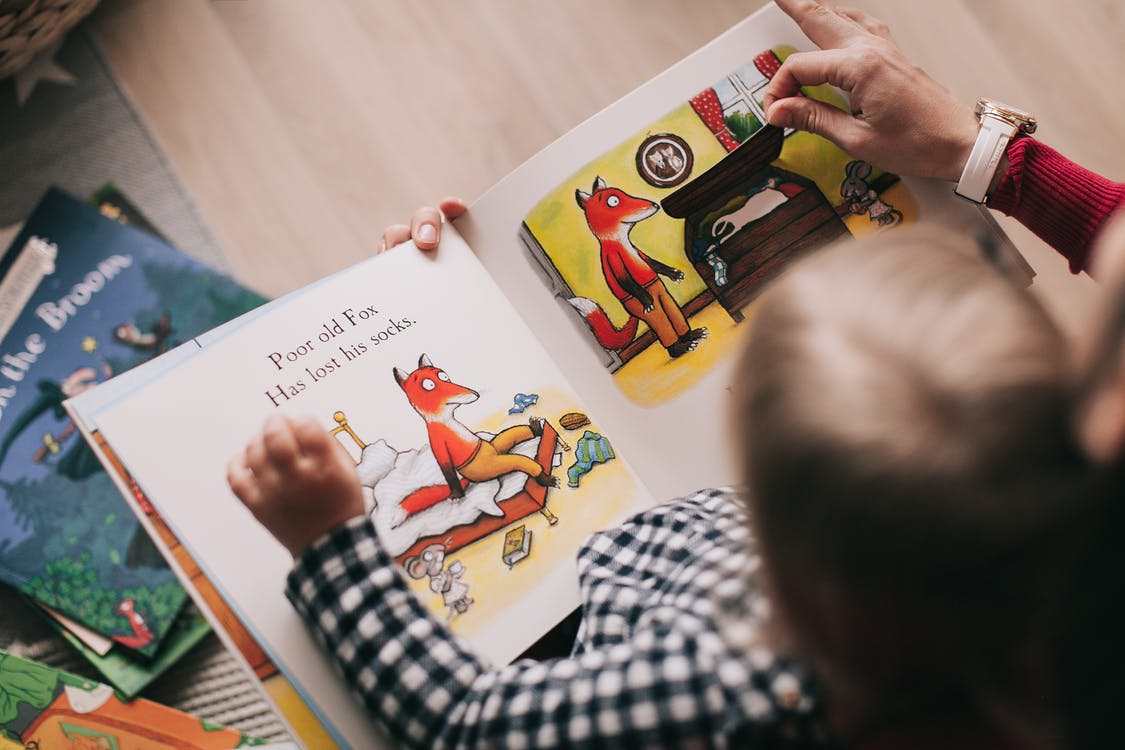Happy Dyslexia Awareness Month!
Many people think of dyslexia as a disability that causes your brain to flip letter order or orientation, but dyslexia actually has a much broader definition! Dyslexia is a language-based learning disability, which means that it affects how the brain processes language when it is heard, spoken, read, or spelled. Dyslexia is neurobiological in origin and encompasses a wide range of deficits, including difficulties with word recognition, spelling, decoding (or reading), and phonological awareness. These difficulties can contribute to secondary characteristics, including difficulties with reading comprehension and fluency.
The National Institute of Health estimates that 15% of the population has dyslexia. While a child cannot “outgrow” dyslexia, there are lots of evidence-based interventions that can help children with dyslexia become more confident, happy, accurate, and fluent readers!
What are some signs of Dyslexia?
In younger children, you may notice:
- Trouble rhyming
- Trouble clapping syllables
- Trouble determining what sound a word starts with
- Trouble blending together sounds to make a word
- Trouble remembering letters and their sounds
- Avoids reading

In older children, you may notice:
- Your child dislikes reading and avoids it
- Your child has trouble recognizing sight words
- Your child has difficulty sounding out and blending new and familiar words
- Your child has difficulty segmenting and spelling new and familiar words
- Your child has difficulty understanding and participating in sound games that include rhyming, alliteration, and syllable clapping
- Your child has difficulty answering comprehension questions about an oral or written passage
- Your child sounds stilted with little variation in their intonation when reading aloud
I think my child has Dyslexia, what next?
Like other neurobiological disorders, dyslexia presents differently in every person. It is recommended that each child with reading/writing challenges have a reading specialist and/or speech-language pathologist assess their letter-sound knowledge and phonological awareness skills prior to intervention in order to determine areas of strength and areas of need. Letter-sound knowledge is the ability to recognize the sounds that correspond with each letter/letter combination. Phonological awareness is the ability to recognize and manipulate sounds in spoken language. Research shows that the pattern of phonological deficits often seen in dyslexia varies greatly between individuals, further indicating that thorough phonological awareness testing to determine individual profiles of strengths and weaknesses is vital.
Different types of phonological awareness includes:
- Concept of a word
- Rhyme recognition
- Rhyme completion
- Rhyme production
- Syllable blending
- Syllable segmentation
- Syllable deletion
- Phoneme isolation of initial sound
- Phoneme isolation of final sound
- Phoneme blending (onset and rime)
- Phoneme blending (all sounds)
- Phoneme segmentation
- Phoneme deletion of initial sound
- Phoneme deletion final sound
- Adding phonemes
- Phoneme substitution of initial sounds
In addition to working on phonological awareness, individuals with dyslexia benefit from a phonics-based approach to reaching, which is a structured approach to teaching reading that stresses letter-sound correspondence and teaches spelling rules (as opposed to relying on memorization). Some common phonics-based reading programs include:
- Orton-Gillingham
- Wilson
- Lindamood-Bell
What can I do now?
Discovering the individualized supports that your child would benefit from can be a lengthy process. If you are eager to get started with implementing some strategies, however, then you may want to consider some of the following activities in order to support development of reading and writing skills.
To support phonological awareness:
To support reading and writing:
- Keep a list of the sounds your child has already learned or is working on. To increase your child’s automaticity when spelling specific sounds, practice calling out a selection of sounds they have already mastered several times a week (e.g. “you know two ways to spell /k/!”) and have them write it with sensory materials or magnets. This will help your child retain the concepts they have learned without regressing as they learn more and more new spelling concepts.
- Have your child practice spelling the target words using strategies that increase the tactile/kinesthetic feedback that they are getting. Options may include writing with their finger in shaving cream, writing with their finger in a shallow rice/sand bin, rolling and shaping letters with playdoh, tracing the letters on paper that placed on top of sandpaper so that they get increased tactile feedback from the roughness, writing with chalk on the sidewalk, or tracing big letters with their fingers in the air.
- Practice finger tapping to assist with sounding out each sound in the target word. It can also be helpful to put little dots that correspond with the sounds in a target word underneath that word.

To support reading fluency:
- When practicing reading fluency, it’s important that the passages being read are not too hard for your child. It’s ok if they are “below” their reading level because the goal is to improve the prosody, rate, and automaticity with which they read. This will generalize to higher reading levels as they gain skills and confidence.
- After selecting a reading passage, you may participate in the following activities:
- Repeated reading – reading the same passage aloud several times until it is read fluently (less pauses, quick decoding, appropriate prosody)
- Paired/choral/simultaneous reading – read aloud with a more skills reader in order to improve prosody
- Echo reading – having the child read the same sentence/paragraph that a skilled reader just read to help with automaticity of decoding and prosody
- Reader’s theatre – having the student read dialogue with a partner, and re-read the dialogue together again, to increase expression and fluency

0 Comments